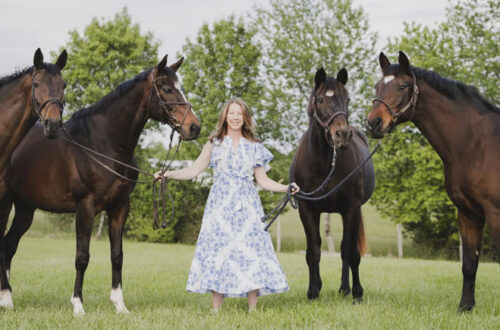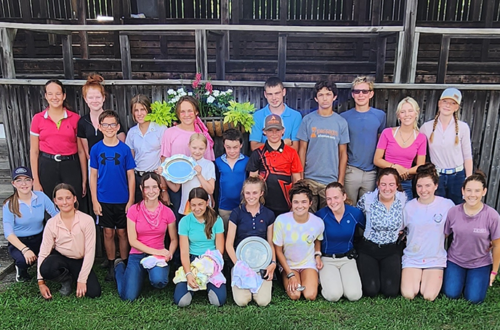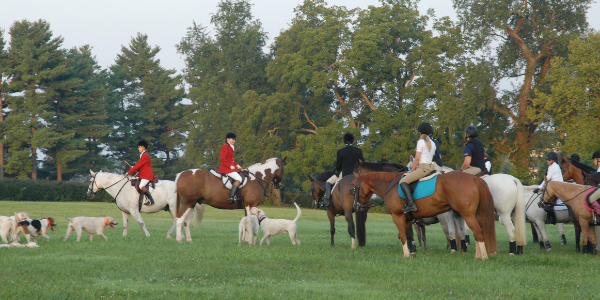Horses and College Part 3: Intercollegiate Riding Teams
In our first two installments found here (part 1) and here (part 2) we discussed going to college and finding a degree for your horsey passion and taking your best (equine) friend with you. In this installment we will discuss joining an intercollegiate riding team.
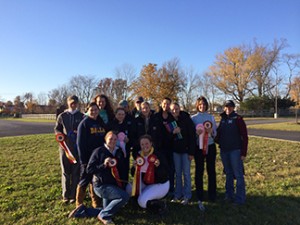
There are many different types of teams you can join and each has its own requirements. All of the disciplines have levels from Beginner to Advanced, but not all of them are considered a “sport” at a college or university. Some equine teams are only considered a “club”. There is a difference. If a college or university chooses to make a team a “sport” team it often means there are not only scholarships, but also required workouts (other than riding), a required minimum GPA, study hall, riding lessons, and sometimes volunteer work. To get a spot on the team, riders are required to do tryouts. Depending on how big or small the team is, they may open it to everyone or they might limit their team due to amount of school horses or funding. As a “sport” most of the time entries, travel, and meals are all covered by the school. Sometimes there is a fee to be on the team, but it’s usually nominal. As a “club” team (at most large universities) it is literally just that, the same as any other club a school offers. Members may still have to do tryouts, and the club might be limited in size, but usually each member is responsible for all fees associated with being in the club (entries, meals, travel, lessons, etc). Lots of clubs do fundraisers to help offset these costs.
The School Horses
Most small liberal arts colleges who offer an equine degree also offer riding teams. Some of them have school horse herds while others rely on local stables allowing the use of their school horses. There is something to be said for the collegiate school horse. They are some of the toughest horses in the business. They must allow beginners to learn, while still being able to jump bigger fences, perform reining routines, and complete dressage tests for more advanced riders. They are expected in most instances to also be a show horse and a pincushion or statue for practical ground classes. Depending on the school, these horses range from grade crosses to fancy warmbloods, champions retired from the FEI levels to young and green stock.
Types of Intercollegiate Riding
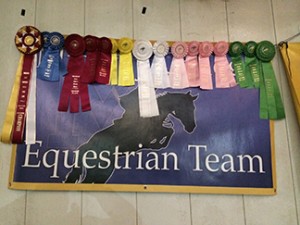 Each year a new organization seems to pop up to encourage intercollegiate riding in many sports. It seems the most well-known is the Intercollegiate Horse Show Association (IHSA). IHSA has both Hunt Seat and Western Equitation divisions. They offer classes for walk/trot/Jog all the way through Open Reining and Fences. Levels are described as follows for hunt seat: Walk/Trot, Beginner Walk/Trot/Canter, Advanced Walk/Trot/Canter, Novice (jumps 2’-2’6”), Intermediate (jumps 2’9”-3’3”), and Open (jumps 3’3”-3’6”). Levels for western include: Walk/Jog, Intermediate 1, Intermediate 2, Novice, Advanced, and Open (which includes Reining). Another popular intercollegiate association is the Intercollegiate Dressage Association. Riders compete on teams of 4, each riding a dressage test at levels ranging from Intro, Lower Training, Upper training, and First Level. Both associations are built on catch riding. Riders draw a name of a horse out of a hat and have to get on and compete. In IHSA there is no warm up, but in IDA riders get 10 minutes to have a mini lesson and then go ride their test. A newer association is the Intercollegiate Eventing Association. Run similar to IDA in levels, this association is in its early stages. Riders must either have their own horse or use a college school horse and compete on teams of 4, much the same as done in Olympic competition. There is also the Intercollegiate Saddle Seat Riding Association, The National Intercollegiate Rodeo Association, and for major universities the National Collegiate Equestrian Association (NCEA) is a division of NCAA and is run similar to the IDA and IEA.
Each year a new organization seems to pop up to encourage intercollegiate riding in many sports. It seems the most well-known is the Intercollegiate Horse Show Association (IHSA). IHSA has both Hunt Seat and Western Equitation divisions. They offer classes for walk/trot/Jog all the way through Open Reining and Fences. Levels are described as follows for hunt seat: Walk/Trot, Beginner Walk/Trot/Canter, Advanced Walk/Trot/Canter, Novice (jumps 2’-2’6”), Intermediate (jumps 2’9”-3’3”), and Open (jumps 3’3”-3’6”). Levels for western include: Walk/Jog, Intermediate 1, Intermediate 2, Novice, Advanced, and Open (which includes Reining). Another popular intercollegiate association is the Intercollegiate Dressage Association. Riders compete on teams of 4, each riding a dressage test at levels ranging from Intro, Lower Training, Upper training, and First Level. Both associations are built on catch riding. Riders draw a name of a horse out of a hat and have to get on and compete. In IHSA there is no warm up, but in IDA riders get 10 minutes to have a mini lesson and then go ride their test. A newer association is the Intercollegiate Eventing Association. Run similar to IDA in levels, this association is in its early stages. Riders must either have their own horse or use a college school horse and compete on teams of 4, much the same as done in Olympic competition. There is also the Intercollegiate Saddle Seat Riding Association, The National Intercollegiate Rodeo Association, and for major universities the National Collegiate Equestrian Association (NCEA) is a division of NCAA and is run similar to the IDA and IEA.
Collegiate riding opportunities can be found at many Colleges and Universities. Most of them also offer scholarships and incentives to join and compete. It is a chance for riders to get to be a part of a team in a sport where we all compete as individuals. It looks good on a resume because riders learn to become more versatile. Most of all if allows those of us who started out as the awkward horse-people in school to finally find others like us who have the same goals and dreams.
Don’t miss out on more information on Intercollegiate riding! Pony Club Tutoring Tuesday’s Webinar on October 13th, 2015 at 8PM EST will be titled “An Introduction to Intercollegiate Riding”. For more information and to join this webinar click HERE!

